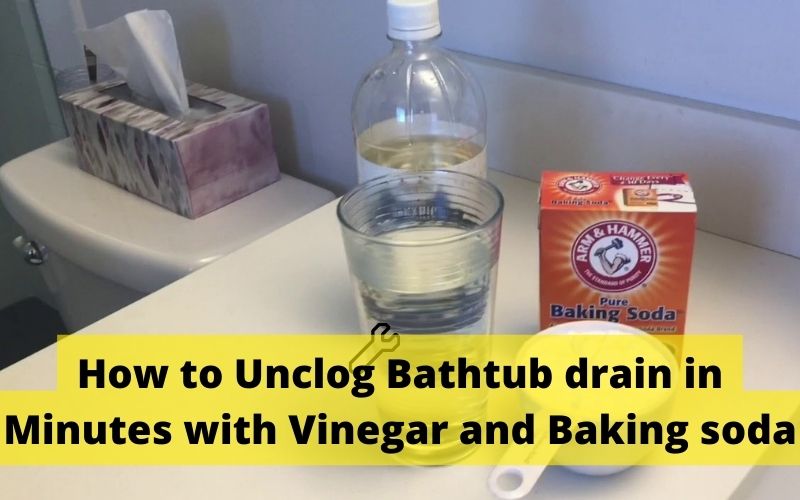Baking soda and vinegar are not only used for science fairs – their volcanic reaction creates an effective cleaning solution that solves a variety of drainage issues. These two items that are commonly used in the home are not expensive, and don’t contain the harmful chemical sodium hydroxide commonly referred to as lye. which is in the clog remover sold in stores.
If you’re interested in trying the DIY method first, you can consider the baking soda as well as vinegar hacks to help with regular drainage cleaning:
How do you maintain, clean and deodorize the cleanliness of a garbage disposal
As one cleans out the garbage regularly and cleans your trash disposal is a regular task to ensure that the kitchen appliance in good working order. Follow these guidelines to ensure that the garbage disposal is operating at its peak:
- Make hot water and run it for about a minute.
- Drop 1/4 cup baking soda into the drain. Turn off the disposal to run for couple of minutes. Let baking soda rest at least 10 mins.
- Pour in 1 cup vinegar. Let vinegar and baking soda to mix. Allow the vinegar as well as baking soda mix to be bubbly for some time.
- Rinse thoroughly with hot water and run the disposal for a couple of seconds.
- Pour the drain full of 2 cups of frozen ice, and 1 Cup of salt. Then, run cold water and switch on the disposal to ensure that all frozen ice is gone. The salt and ice help to loosen food debris.
- Cut off a citrus peel (lemon or lime and grapefruit). While running cold water with the trash disposal turned on the garbage disposal, place fruit slices in one by one. Fruit slices make your garbage disposal fresh and clean!
How can you avoid blockages in the garbage disposal
There’s some disagreement about regarding whether certain foods are clean or block the garbage disposal. Follow our suggestions and refrain from putting these foods into your disposal. Make them compostable instead. :
Egg Shells
The most popular drain myth is that eggshells make the blades sharper in the garbage disposal. This is not the case. The membrane that is on the inside of an egg’s shell may stick to grinding machines and cause them to dull.
Espresso Grinds
In the garbage disposal has been the norm to eliminate the smell. The coffee grounds aren’t so bad for the garbage disposal , as it is for the drain as they can build up and cause obstructions.
Stringy Vegetables
Celery husks and corn husks skins, and artichokes – what do they are in common? Their fibrous and stringy texture is perfect for getting caught up in the garbage disposal and slowing down the motor.
Starchy Foods
The potatoes create a thick paste when they are churned up in the garbage disposal, while pasta and rice create a slimy film around the edges.
GREASE OR COOKING OILS
Because grease and oil begin to become solid at an appropriate temperature which is why they can be disastrous for sewers, garbage disposals and wastewater treatment later on. Fats are the biggest culprits when it comes to total sewer and pipe blockage.
How do you wash a dishwashing machine
Cleaning the dishwasher can seem unnecessary, but regular cleaning can prolong the dishwasher’s life span and help keep it running effectively. Here’s howto do it:
- Take off the bottom rack of the dishwasher to reach the drain. Get rid of any food leftovers.
- Put one glass of vinegar on the top rack. Run an agitated water cycle in the dishwasher that is empty.
- Sprinkle 1 cup baking soda on the top of the dishwasher, then begin an additional hot cycle of water.
We suggest cleaning the dishwasher using baking soda or vinegar each month.
How to clear the drain
A fully blocked drain will require the assistance of an experienced plumbing professional , but baking soda and vinegar could be a simple solution for a partially blocked drain. This solution dissolves and push the sludge down the pipes, allowing water to flow easily.
- Allow hot water to run for a few minutes to warm the pipes.
- Add 1/2 cup baking soda into the drain.
- Pour one cup vinegar and cover your drain using a sock and allow it to sit for 10 minutes. You will hear the vinegar bubbling.
- Rinse the area with hot water.
Continue steps 3 and 4 until the desired results are reached. It may be repeated more than once.
The best method to avoid problems with drains is to prevent. Cleaning drains with baking soda as well as vinegar regularly can help prevent the accumulation of dirt and clogs in general

